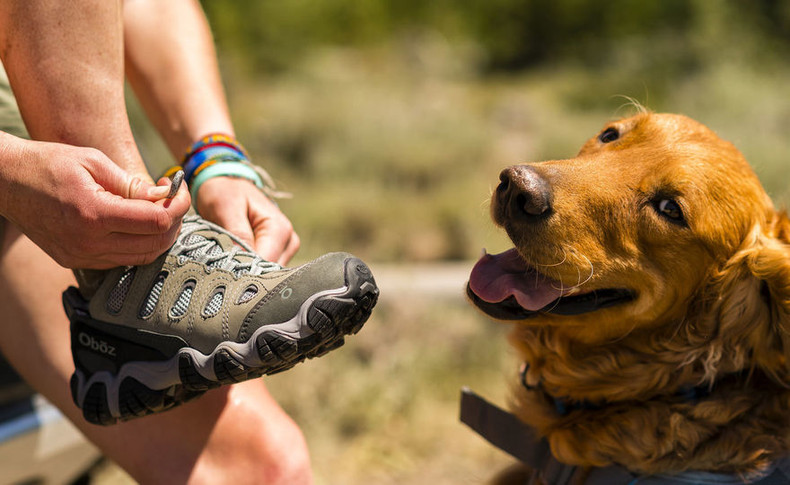Have you been spending more time on your feet? Is walking becoming your primary pandemic activity? Are your feet feeling a bit strained? Perhaps your shoes are to blame. Here are some of the features to look for in a supportive walking shoe.
1. Firm heel counter: A firm heel counter provides additional stability for the foot and ankle and prevents the foot from sliding off the sole. To test for the strength of the heel counter grab a hold of the back of the shoe just above the heel counter and attempt to squeeze the opposing sides together. If there's little give the heel counter is solid. However, if you can push the two sides together the footwear provides little support and may cause you to more readily twist your ankle due to lack of support.
2. Shank: A steel, plastic or carbon shank provides additional midfoot support, especially for the foot arches. It prevents the arch from overflexing when the foot moves through the middle of the sole. To check for the proper level of support in this area squeeze the shoe from the front and the back with the palm of your hand. If the sole flexes at the ball of the foot the midfoot support is strong and the shoe has a good shank. If the sole flexes in the middle the shoe lacks support across this area and may cause additional foot fatigue.
3. Toe spacing: Many a toe will become crooked when not provided with the proper amount of space. Wiggle room for toes is extremely important in footwear to prevent corns, blisters or callousing between toes. To check for proper length and width in a shoe do the finger and pinch test. As for length there should be approximately one index finger worth of space between the longest toe and the end of the shoe. Width is checked with your index finger and thumb. Line the thumb up with your big toe joint and the index finger with your baby toe. Bring the two fingers together at the top of the shoe while gently pushing on the material. If you end up being able to pinch the material between your fingers the shoe is to wide. If there's just a little give in the material you have an excellent fit.
4. Tread: Are you hitting the trails or the road? When choosing the tread of your sole it's important to consider the surfaces you will be walking on most frequently. Trail shoes have softer rubber outsoles with deeper grooves to help them better hold onto rocks, gravel and roots. On the contrary, regular athletic shoes have smaller grooves with a firmer rubber outsole to prevent it from wearing through prematurely.
5. Shock Absorption: The level of shock absorption required in a shoe is also dependent on the surfaces frequented most often. Athletic shoes tend to have thick, padded soles to provide additional padding under the heel and the ball of the foot. This also helps to reduce stress on ankles, knees and hips. However, trail shoes tend to have thinner soles, as this provides additional stability on uneven surfaces and prevents potential ankle sprains.
Finally, when trying shoes the footwear should feel comfortable in the store. There is no such thing as a break-in period. However, experienced fitters can make small adjustments to your footwear to improve the fit of the product while in store.

